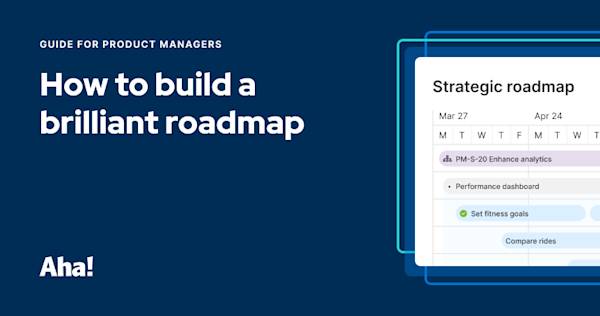IT teams deliver solutions that influence an organization's success. And they are increasingly doing it with a product management mindset. By working with product managers to create roadmaps for internal tools, IT teams can help solve business problems and ultimately achieve critical business initiatives like digital transformation.
Depending on an organization's size, the chief information officer (CIO), chief technology officer (CTO), VP of information technology, or IT director typically leads the IT department. It might include engineers, operators, systems architects, analysts, product managers, and project managers.
This guide covers the structure of IT teams, how you collaborate across the business, and the value you deliver every day.
Jump ahead to any section:
How do IT teams create business value?
IT teams contribute in visible and invisible ways — from supporting day-to-day operations to driving companywide transformation. The most impactful IT teams align their work with business goals and take a proactive role in facilitating long-term success. Here are a few key ways IT teams add to the value of an organization:
IT-business alignment: Connecting technology investments directly to business strategy to drive measurable outcomes
Security and compliance: Reducing risk by identifying threats early and maintaining strong security practices
Communication: Managing digital communication systems and supporting collaboration across the organization
Technical support: Solving technology issues quickly and helping teams get the most out of available tools
Productivity: Recommending and implementing tools that remove friction and improve how people work
Innovation: Introducing new solutions that help the company respond to change and stay ahead
Top
What are the main functions and roles within an IT team?
IT can take the form of any technology that teams within an organization use to get their work done. That includes hardware, software, and computer systems as well as the infrastructure (networks, data storage, memory, etc.) needed to maintain those systems.
While team structure varies by company size and complexity, most IT organizations are grouped by area of expertise. Each team focuses on a specific domain, such as networking or software development, and may report to a dedicated IT manager or share leadership across functions. Here's a breakdown:
Team | Primary responsibility | Typical roles |
IT architecture | Designing systems and infrastructure to support long-term strategy and reduce risk | Chief enterprise architect, solution architect, network engineer |
Networking | Monitoring and managing connectivity systems like LAN, WAN, and firewalls | Network architect, network engineer, systems administrator |
Infrastructure | Overseeing physical and cloud-based systems that support connectivity, system access, and data availability | Database administrator, data warehouse specialist, hardware technician |
Information security | Protecting sensitive data, preventing breaches, and ensuring compliance with regulations | CISO, cybersecurity specialist, cloud security architect |
Engineering and QA | Developing and testing software used internally or by customers | Full-stack developer, QA engineer, software architect |
IT support | Resolving technical issues and providing assistance across the organization | Tier 1–3 support specialist, IT technician, help desk analyst |
Business intelligence | Analyzing and interpreting data to support better decision-making | BI analyst, data analyst, business analyst |
AI and automation | Integrating AI tools and automating workflows to improve efficiency and reduce manual work | AI engineer, machine learning specialist, automation architect |



